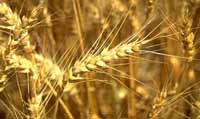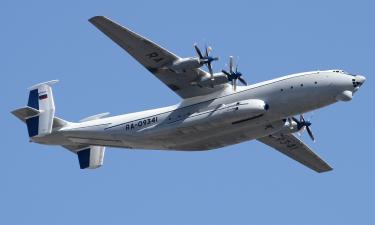Russia may feed the world and make it a better place, but not today
Last year’s record growth of prices on food has become an unpleasant surprise for the whole world. Prices on crops jumped 50 percent up, on milk – 80 percent; meat, dairy products and rice became more expensive in many countries of the globe. Rumor has it that the price growth was caused by the increase of food consumption in India and China, which automatically triggers an increase of demand on basic products in the rest of the world. In addition, the price growth is based on growing prices on fuel, fertilizers and fodder, not to mention bad harvests. It seems that the phantom of hunger is looming.

Specialists continue to blacken the picture. UN food experts predict a further growth of prices on basic foodstuffs. According to their estimates, food will continue to rise in its price during the forthcoming decade, although not so fast as in the previous year. Prices on meat will gain 20 percent, sugar – 30 percent, crops – up to 60 percent. Vegetable oil is said to have the largest increase in its price – 80 percent.
Russia ’s Minister for Agriculture, Aleksei Gordeyev, said that the boosting production of crops and meat in Russia would be capable of leaving the global output of food 2.5 or even 3 times behind.
It is worthy of note that the minister said in April of this year that Russia would become one of the world leading exporters of crops during the upcoming five years. In November 2007 Mr. Gordeyev said during his meeting with Vladimir Putin that Russia would be able to become self-sufficient in terms of dairy and meat products in just a couple of years.
Indeed, Russia used to be one of the largest exporters of food in the world. Last year Russia gathered 82 million tons of crops and increased their export by 50 percent to 17 million tons. On the other hand, this may be the limit for the national agriculture.
China gathered 500 million tons of crops last year. China needs this entire amount for its own home consumption, whereas Russia only needs 65-70 million tons. Thus, Russia could export not less than 30 million tons of crops, which makes one-third of the global market.
As for meat products, the situation in Russia leaves much to be desired. For the time being, Russia is strongly dependent on meat imports. The nation imports poultry most – up to 40 percent of its consumption, with 25 percent of beef and 20 percent of pork. The poultry farming has been developing steadily, although there is practically no growth in cattle breeding.
From the beginning of 2007 to early 2008, the prices of some of the most basic international food commodities increased dramatically on international markets. The international market price of wheat doubled from February 2007 to February 2008 hitting a record high of over USD$10 a bushel. Rice prices also reached ten year highs. In some nations, milk and meat prices more than doubled, while soy (which hit a 34 year high price in December 2007) and maize prices have increased dramatically.
Total food import bills rose by an estimated 25% for developing countries in 2007. Researchers from the Overseas Development Institute have suggested this problem will be worsened by a likely fall in food aid. As food aid is programmed by budget rather than volume, rising food prices mean that the World Food Programme (WFP) needs an extra $500 million just to sustain the current operations.
To ensure that food remains available for their domestic populations and to combat dramatic price inflation, major rice exporters, such as China, Brazil, India, Indonesia, Vietnam, Cambodia and Egypt, have imposed strict export bans on rice. Conversely, several other nations, including Argentina, Ukraine, Russia, and Serbia have, as well, either imposed high tariffs or blocked the export of wheat and other foodstuffs altogether, driving up prices still further for net food importing nations while trying to isolate their internal markets.
Utro
Subscribe to Pravda.Ru Telegram channel, Facebook, RSS!



